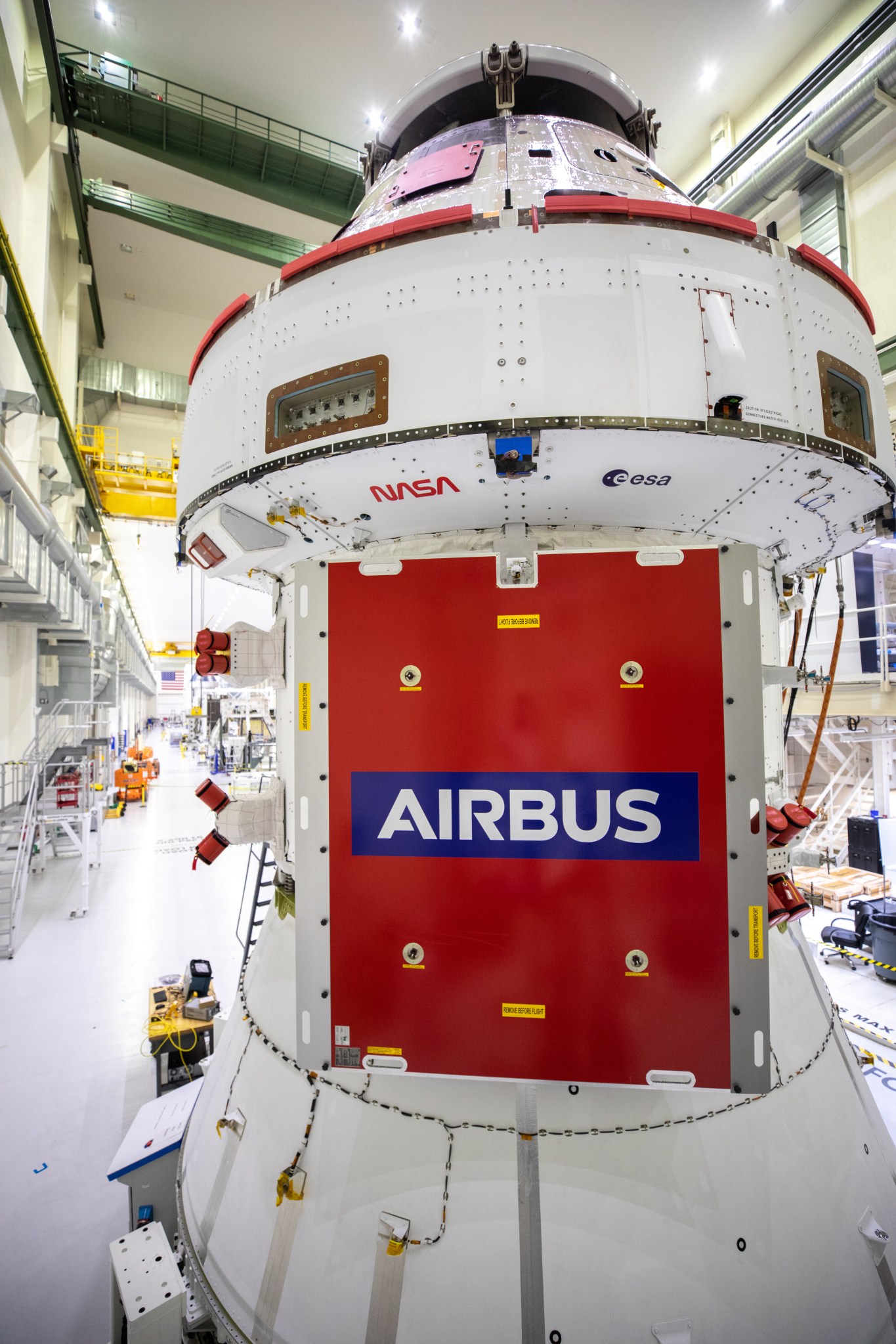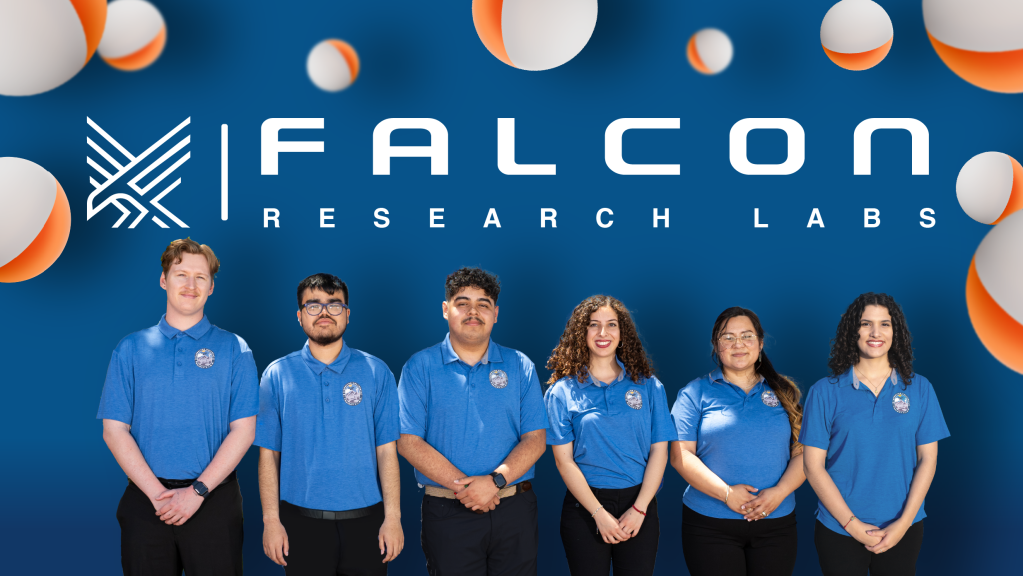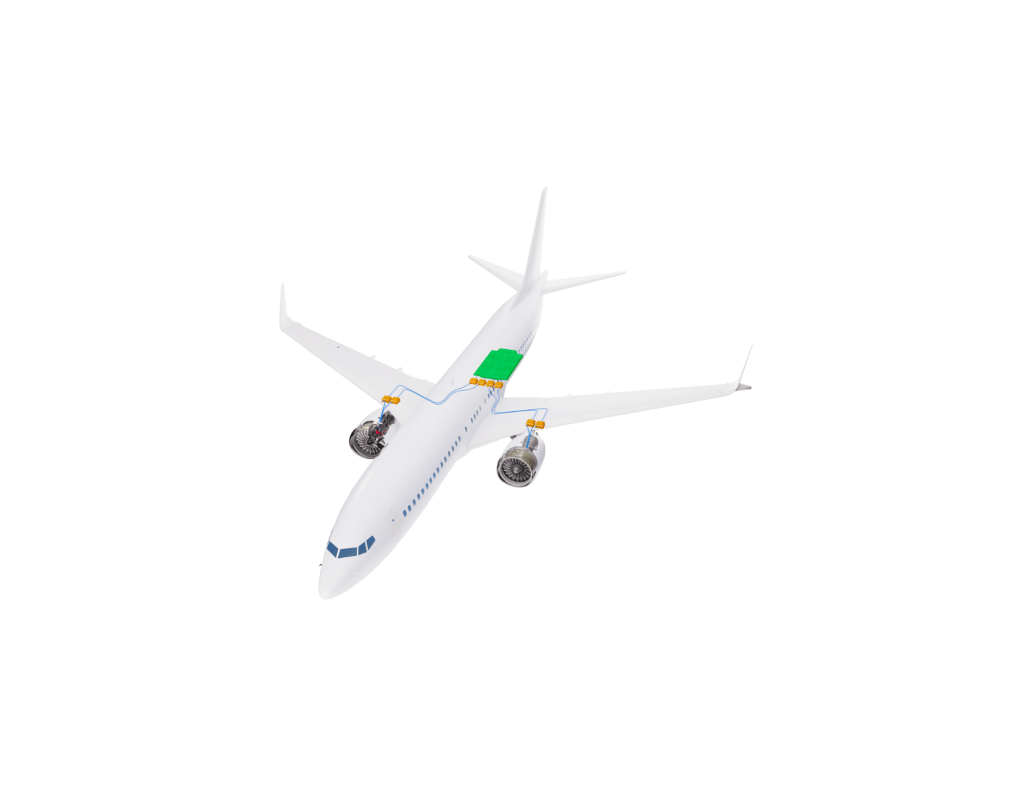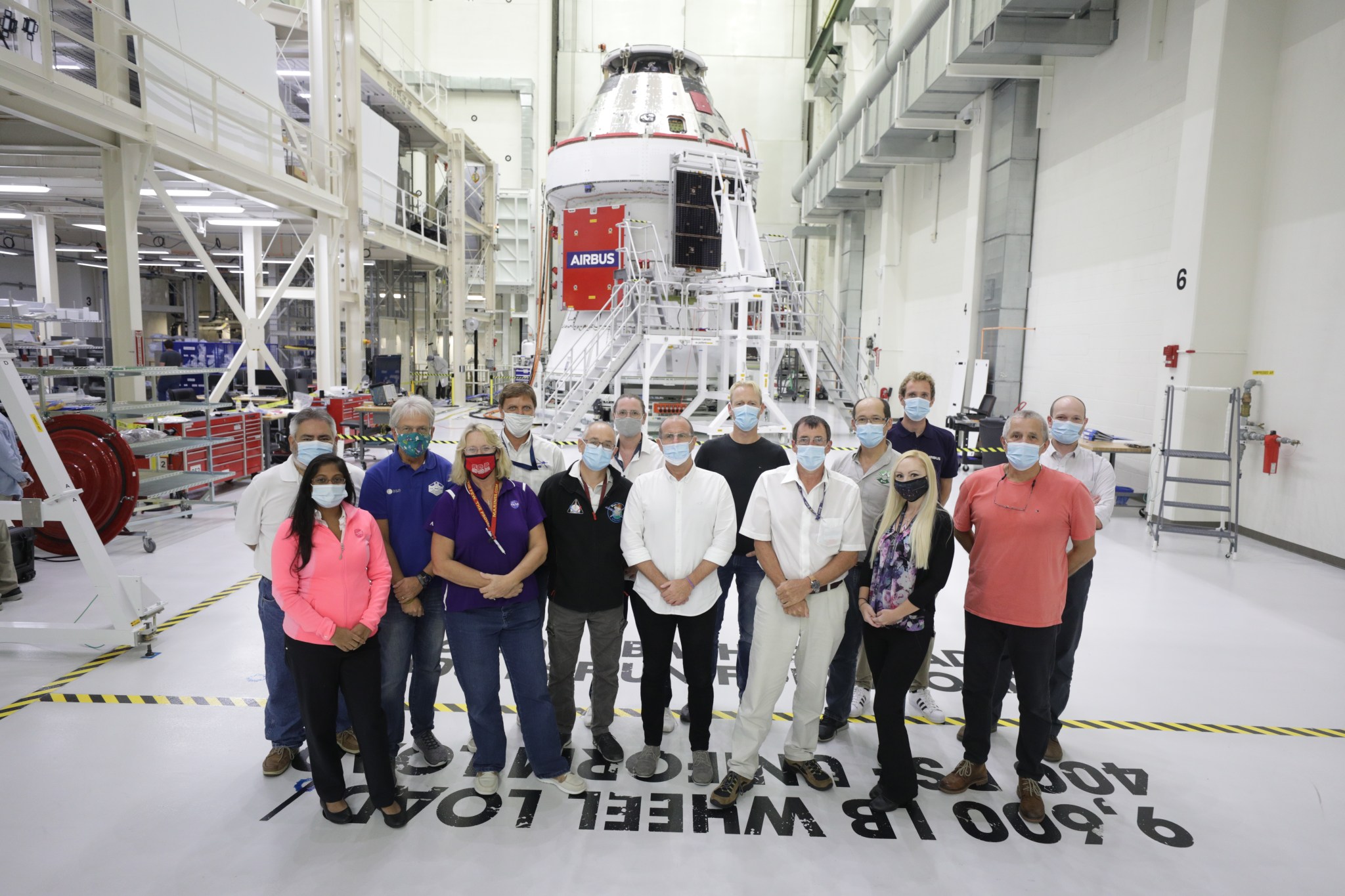By Linda Herridge
NASA’s Kennedy Space Center

Teams from NASA, Lockheed Martin, the European Space Agency (ESA), Airbus Defence, and Airbus Netherlands have completed the meticulous installation of Orion’s four solar array wings. The arrays will supply energy to the service module that will power and propel the spacecraft during NASA’s Artemis I mission. They were fitted onto the European Service Module (ESM) inside the Neil Armstrong Operations and Checkout Building at the agency’s Kennedy Space Center in Florida.
Activities on the spacecraft continue to move forward — the next set of final installations include the spacecraft adapter jettison fairings, which enclose the service module, and forward bay cover, protecting the upper part of Orion including its parachutes throughout its mission. Once complete, the spacecraft will begin its journey through Kennedy to be integrated with its launch abort system and ultimately, the Space Launch System (SLS) rocket for launch from Kennedy’s Launch Pad 39B.
“I have been blessed with 30-plus years working for NASA, and can honestly say the last six weeks working on Artemis I ESM, with such an exceptional US and European team is one of the moments in my life that I will never forget,” said Marie Reed, NASA’s Orion Service Module production operations lead. “It’s so amazing to be a part of the team that is sending humankind back to the Moon. Go Artemis I!”
Prior to installation on the European-built service module, technicians attached each of the arrays to a tool called a Vertical Integration Rig that was specifically designed for the Orion team to install the wings in the vertical orientation onto the spacecraft. Once on the rig, the arrays are extended, an inspection is performed to confirm everything functions as expected, and then they are retracted and ready for installation. Each of the solar array panels will generate 11 kilowatts of power, enough electricity to power two three-bedroom homes, and span about 63 feet when fully extended.
During Artemis I, the solar arrays will simultaneously unfurl shortly after Orion reaches orbit, about 15 minutes after launch. Deployment of the wings will begin with activating thermal knives to cut the four cables holding down each wing, which takes approximately one minute. The panels then begin to move out and deploy, which will take up to five minutes. In space, the arrays will provide power as Orion travels 40,000 miles beyond the Moon, and returns to Earth for a splashdown in the Pacific Ocean.
The first in a series of increasingly complex missions, Artemis I will test the Orion spacecraft and SLS as an integrated system ahead of crewed flights to the Moon. Under the Artemis program, NASA will land the first woman and the next man on the Moon in 2024.

























